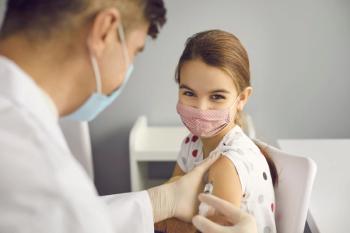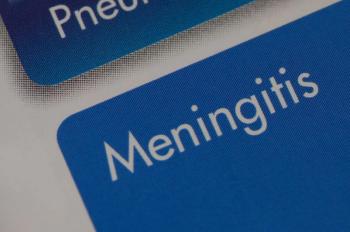
Vaccine Messaging for Teens Should Tailor to Personal Perspectives
Using the PhotoVoice methodology, researchers conduct a study exploring Latinx adolescents’ preferences and the impacts of the COVID-19 pandemic and vaccine messaging.
Vaccine messaging and awareness should be tailored to adolescents’ unique perspectives and preferences to effectively reach Latinx individuals in this age group, according to a study published in the Journal of Adolescent Health.1 When it comes to vaccine promotion for adolescents, they claimed to prefer culturally appropriate messaging that represented diversity in their communities.
“The burden of COVID-19 has disproportionately affected minority groups nationally,” wrote the authors of the study. “Mirroring health disparity trends in health and health care, minority populations, including Black/African American and Latinx populations, faced higher COVID-19–related morbidity and mortality.”
A plethora of research on the COVID-19 pandemic has shown that these same racial disparities experienced by minority groups have occurred in COVID-19 vaccine rates.
According to KFF data from July 2022, a time when vaccines were continuing to be approved for specific age groups and populations, just 64% of white patients received at least 1 dose of the COVID-19 vaccine.2,3 Comparatively, Hispanic and Asian populations exhibited higher rates of vaccination at 87% and 67%, respectively. For Black patients, however, just 59% reported at least 1 dose of the vaccine.
READ MORE:
Authors of the current study report similar statistics, explaining how specific minority populations may be hesitant to receive vaccines because of medical misinformation, distrust, and general concerns regarding safety and efficacy.1 Indeed, a previous study published in Vaccines explored 16 quantitative and 14 qualitative studies on the determinants of COVID-19 vaccine hesitancy among Black and African American communities in the US. Among these, like those previously mentioned, mistrust, fear, and information gaps were the key determinants of individuals expressing hesitancy.4
With this background in mind, researchers wanted to further understand potential vaccine hesitancy among a specific minority group. Furthermore, this study focused on adolescents from an underrepresented racial background and an undervaccinated locale to better understand their preferences and experiences during the COVID-19 pandemic.
“This research engages Latinx teens, an under-represented age group from a minority and undervaccinated population, to understand their perspectives and experiences during the pandemic and elicit input to inform message development to improve COVID-19 vaccination rates,” continued the authors of the current study.1 “This study used a qualitative community-based participatory method known as PhotoVoice to explore Latinx teens' perspectives and experiences during the COVID-19 pandemic.”
In order to develop messaging about COVID-19 for Latinx children aged 14 to 17 years, researchers used the PhotoVoice research methodology. PhotoVoice involves a combination of photography and storytelling, allowing for participants that are typically from underserved areas to provide a detailed look into their lived experiences. “The approach allows participants to visually document their environments and experiences, enabling them to share insights into social, political, and health-related issues,” according to the Johns Hopkins Center for Health Equity.5
Using the PhotoVoice approach with Latinx adolescents in the Denver Metro, researchers conducted a 3-step process for study participants. First, individuals took photos related to specific prompts regarding COVID-19. Next, the researchers instructed participants to provide descriptions and narratives behind the images.
Finally, they were then gathered into 2 separate virtual focus groups to address the following prompts: "How has COVID-19 affected you, your friends, your family, and your community?" "What are your hopes for the future of the COVID-19 pandemic?" and "How has the COVID-19 vaccine impacted you, your friends, your family, and your community?" among others. A third focus group was then conducted to better understand the impacts of COVID-19 vaccine messaging.1
The final analysis only included a total of 8 Latinx individuals (mean age, 16.3 years; 87% girls) between 14 and 17 years, screened from February to May 2022.
Among the 8 individuals’ focus group responses and overall participation, 3 key themes emerged regarding COVID-19 vaccination and the pandemic itself. Those themes included the following statements: The COVID-19 pandemic had substantial negative impacts on Latinx adolescents and their communities; adolescents felt the COVID-19 vaccines were effective, often choosing to get vaccinated to protect loved ones; and adolescents prefer positive, relatable, and altruistic public health communication.
“Our study revealed that teens are driven by facts but identified other messaging characteristics which influence their priorities and preferences,” wrote the authors.1 “Vaccine messaging strategies must align with Latinx teens' personal and cultural values and feature individuals who reflect teens' identities and lived experiences.”
Specifically in the Latinx population, individuals want to see people that are like them when considering something health related. Not only does this translate to trust in the messaging provided, but it also acknowledges the perspectives of underserved individuals that have been historically marginalized.
Future research, according to the authors, will focus on expanding this PhotoVoice technique to include other populations, geographic backgrounds, and racial or ethnic groups. Also, with the low study population included in the analysis, researchers may want to further expand participant cohorts when exploring immunization messaging and the PhotoVoice methodology.
“To effectively reach teens, vaccine messaging must be tailored to their unique perspectives and preferences,” they concluded.1 “By developing culturally responsive, tailored vaccine messaging, public health efforts can better engage Latinx teens.”
READ MORE:
Don’t get left behind: Sign up today for our
REFERENCES
1. Jimenez-Zambrano A, Reedy J, Scherer L, et al. Engaging Latinx youth in PhotoVoice to inform message development to improve COVID-19 vaccine uptake. J Adolesc Health. October 10, 2025. https://doi.org/10.1016/j.jadohealth.2025.08.025
2. History of COVID-19: outbreaks and vaccine timeline. Mayo Clinic. Accessed October 14, 2025. https://www.mayoclinic.org/diseases-conditions/history-disease-outbreaks-vaccine-timeline/covid-19
3. Latest data on COVID-19 vaccinations by race/ethnicity. KFF. July 14, 2022. Accessed October 14, 2025. https://www.kff.org/covid-19/latest-data-on-covid-19-vaccinations-by-race-ethnicity/
4. Savoia E, Masterson E, Olander DR, et al. Determinants of vaccine hesitancy among African American and Black individuals in the United States of America: a systematic literature review. Vaccines (Basel). 2024 Mar 7;12(3):277. doi: 10.3390/vaccines12030277.
5. Photovoice. Johns Hopkins Center for Health Equity. Accessed October 14, 2025. https://publichealth.jhu.edu/center-for-health-equity/photovoice
Newsletter
Pharmacy practice is always changing. Stay ahead of the curve with the Drug Topics newsletter and get the latest drug information, industry trends, and patient care tips.






































































































































